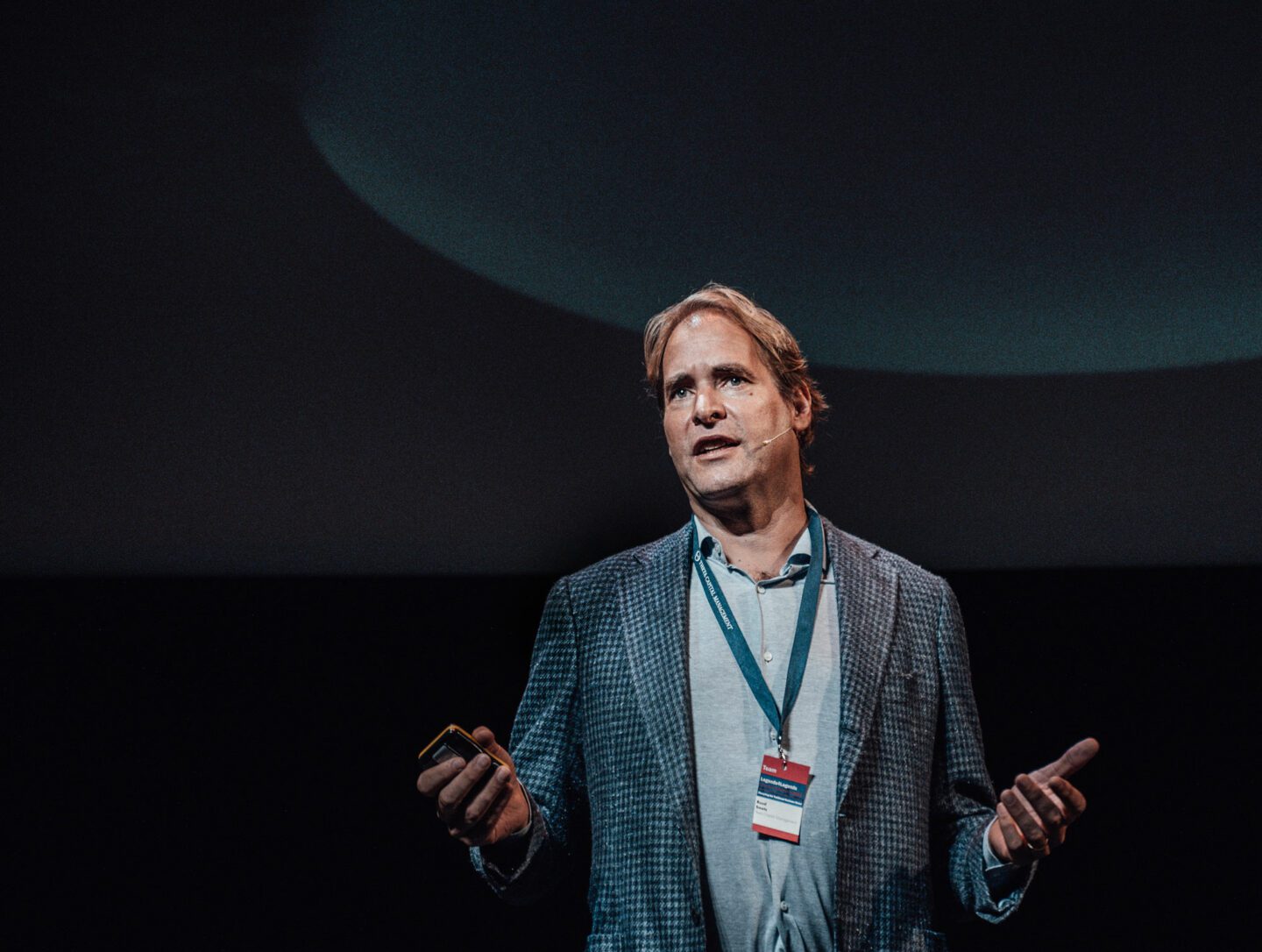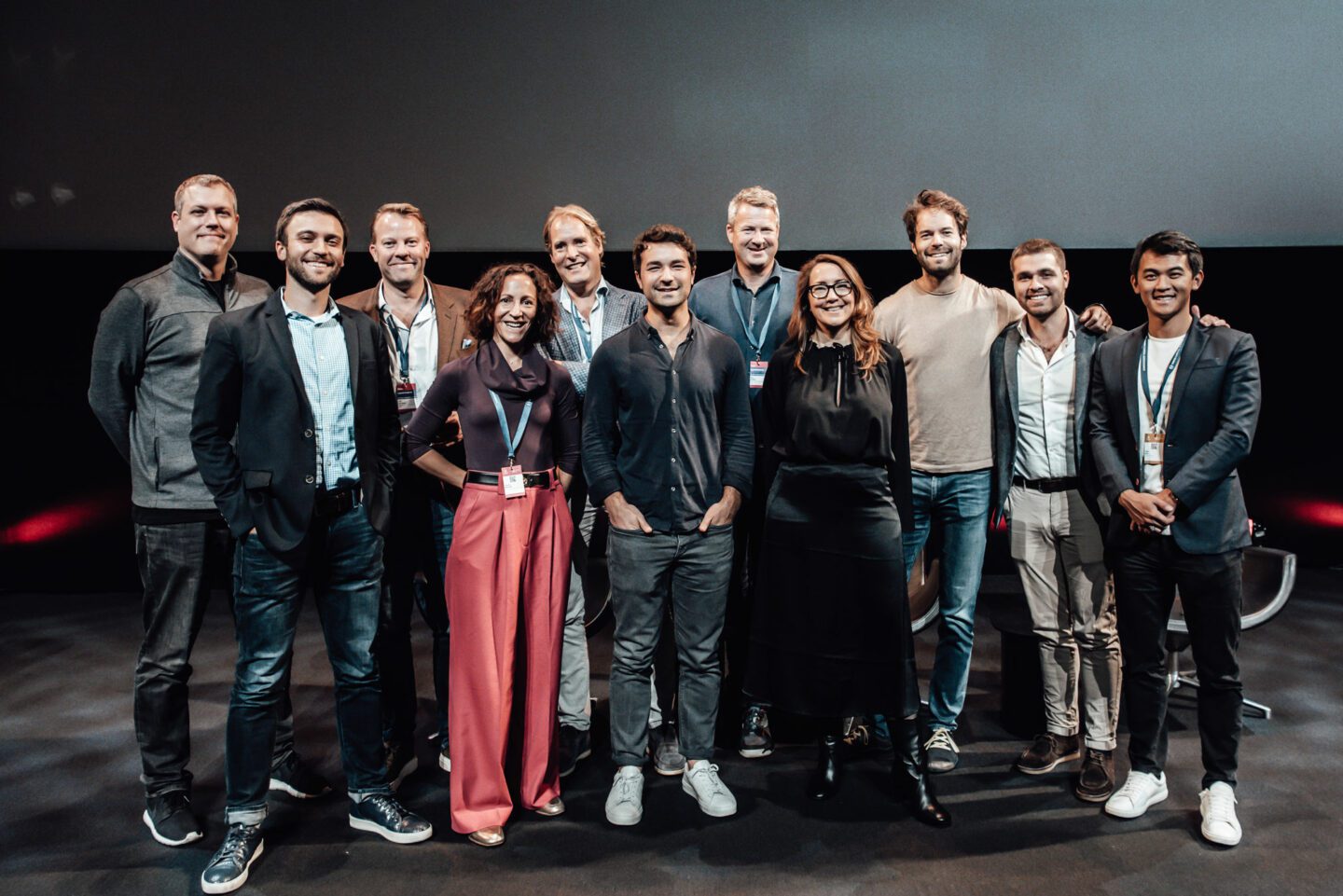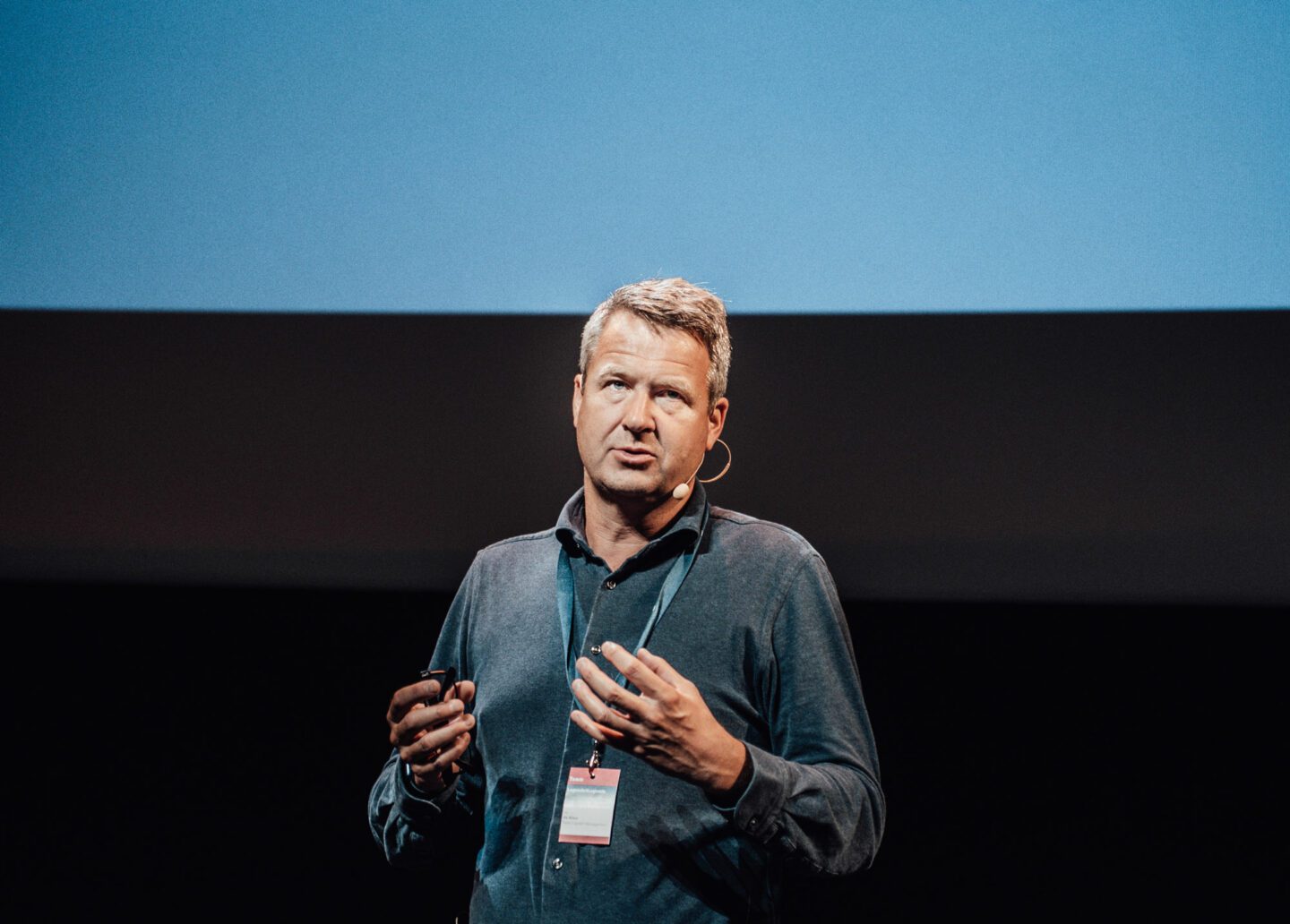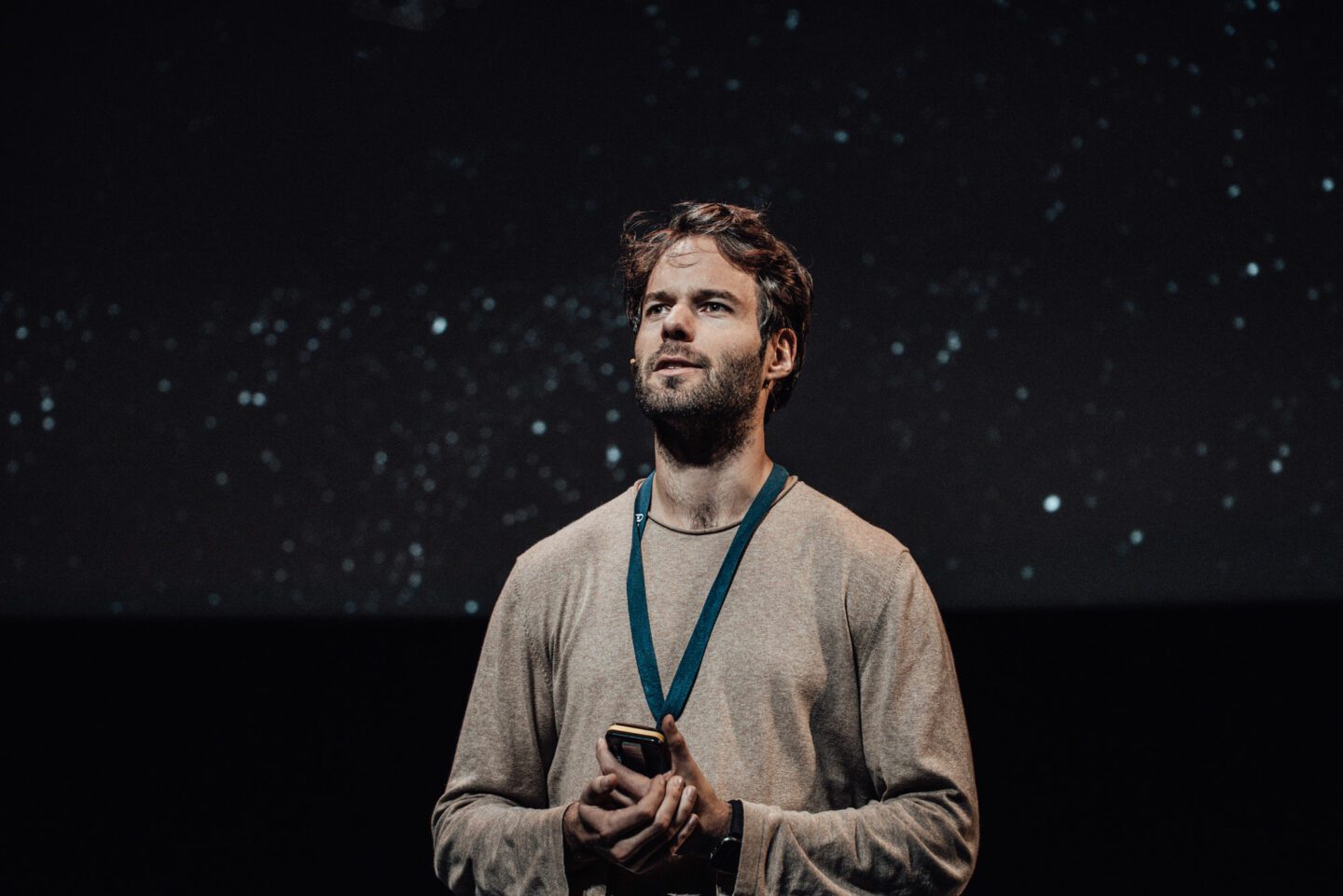
The sixth Legends4Legends event, held live at Amsterdam’s Eye Film Museum, highlighted key trends and opportunities in and around blockchain and crypto investing, and showcased ideas from leading venture capital and private equity investors, innovators and entrepreneurs.
Cryptocurrency tokens are risk assets prone to speculative bubbles and they sold off in 2022 in line with other risk assets (though some NFTs appreciated). Valuation multiples are being compressed across all liquid and illiquid assets, but spectacular growth trajectories can outweigh this headwind: Ethereum is up by factor ten in three years, and some VCs in the space have made 100 times or more on individual investments. Some multi-manager and fund of funds vehicles are targeting, and delivering, returns of at least 10x.

Eye Film Museum, Amsterdam
Abundant innovation is powering real revenue growth stories that are continuing regardless of token price volatility. Crypto-native VCs had a head start but they are increasingly being joined by more mainstream VCs.
Theta Blockchain Ventures has invested USD500 million in crypto native funds since 2018, and picks winners by allocating to leading VCs, often negotiating fee discounts and capacity rights. Theta has also taken advantage of the turmoil in 2022 by acquiring discounted interests on the secondary market from LPs who defaulted on their capital commitments.
The market capitalisations of crypto tokens can change by a trillion USD quite quickly, but blockchain and crypto venture funding is growing more steadily: H1 2022 funding of around USD21 billion was about ten times higher than the prior bear market trough and is an important segment within overall global VC dry powder of USD540 billion.
Ethereum is emerging as a clear winner, up by factor 10 since Covid, and it is a much better innovation proxy than Bitcoin.
Lasse Clausen, founding partner, 1kx
Web3 and protocol ownership
Web3 de-centralises ownership of data and the internet and lets users and builders own pieces of protocols and digital assets. “The information superhighway is also a superhighway for value, adding property rights to the internet,” says Ruud Smets, CIO of Theta Capital Management.
Tokens are equity in a protocol. Owners of the second largest blockchain token, Ether, benefit from increasing use of ETH in smart contracts, coding, and various applications such as decentralized Apps (dApps), decentralized autonomous organisations (DAOs), Enterprise Ethereum, NFTs, Stablecoins and Decentralised Finance (DeFi). These feed into uses such as supply chain management, remittances, royalties and secure information sharing.
The dynamics of value creation work through demand and supply. Increased demand for ETH transactions can raise its price, while larger volumes of transactions increase their cost and can reduce supply of ETH (through the EIP-1559 burn mechanism).
Ethereum: the mother protocol
Ethereum, effectively a virtual computer in the cloud, run by a distributed network, only launched in 2016 and in October 2022 was valued like a high growth company. “It is worth around USD163 billion, or 25 times its last twelve months’ revenues of USD7 billion. It is not a speculative currency, it is a productive asset,” says Smets. Those staking Ether and locking it can earn a yield, and it has huge optionality from the growth of other protocols built on it, such as Lido or Uniswap.

Speakers, Legends4Legends Charity Conference 2022
Protocols can disrupt the next generation of business models in multiple industries: lending, payments, insurance, gaming, art, music, social networks and forestry management. “It is not just another vertical. It will transform every other vertical,” says Evan Fisher, founder of Portal Ventures.
Protocols form the foundation of a new economic ecosystem that is open, transparent, global, operates 24/7/365, and has enormous scalability that is dubbed “hyperscaling”. The Uniswap protocol and DeFi platform has since inception earned USD2.4 billion of fees for exchanging USD1.7 trillion. This works out at about 0.14% or 14 basis points of the amount exchanged. Uniswap began life in 2018 with a USD60,000 grant and is earning over a billion a year just a few years later.
DeFi: Democratising access to liquidity, yield, lending and borrowing
DeFi is accelerating the pace of the financial system. “In a matter of seconds, 24/7/365, it is possible to transfer assets, take out loans or obtain insurance,” says John van Marle, Partner for Marketing & Origination at Theta.
Ethereum-based lending and borrowing was what spawned DeFi, with first proof of concept in 2016. This then led to minting stable coins, using crypto value as collateral, and other protocols developed improved versions. “Our vision at Aave is a global ocean for liquidity, where everyone has access to the same financial opportunities,” says Stani Kulechov, founder and CEO of Aave Companies.
DeFi can be much faster than traditional finance in part because smart contracts can expedite the whitelisting of assets of borrowers, liquidators, KYC and compliance checks.
Crypto is especially sought after in inflationary countries such as Argentina, where centralised exchange Binance is widely used. A DeFi protocol hosted on a Layer 2 could also be used. Central banks in countries including Brazil are exploring DeFi. Traditional banking rails could be replaced by stablecoins.
The information superhighway is also a superhighway for value, adding property rights to the internet.
Ruud Smets, CIO, Theta Capital Management
Bridging traditional finance into institutional crypto adoption
Point72 Ventures invests Steve Cohen’s capital into various areas including fintech, digital assets, deep tech and enterprise technologies. Their digital assets strategy focuses on companies that build bridges for traditional finance to adopt and offer crypto products and services.
“This is very different from investing in blockchain infrastructure or decentralized applications that raise money mainly through token sales. As an example of an infrastructure category, an entirely new set of service providers is needed to help traditional financial institutions custody and trade digital assets. New challenges include access to crypto market and on-chain data, understanding the fundamentals of token projects and knowing when blockchains suffer outages, are upgraded or forked, or when there are major governance votes or token unlocks. That’s why we invested in Messari, a crypto data, news and research aggregator that provides a trusted source around crypto tokens for both retail and institutional investors,” says Adam Carson, Partner and Head of Digital Assets at Point72 Ventures, who previously led Digital and Fintech Strategy and Partnerships at JPMorgan Chase.
Notwithstanding the recent turmoil around the collapse of FTX and the risk of contagion, Carson still believes that large institutions will adopt crypto within a few years. One impediment is simply the time it takes for adoption of new technology. “Adoption of the internet exploded when it became very easy for anyone to ‘write’ on the web, such as authoring a blog, editing a wiki or creating a social network profile. A similar catalyst is now needed for Web3 adoption to take off,” says Carson.
Reducing the cost of trust
1kx founding partner, Lasse Clausen, characterizes blockchain technology as a public utility good combined with a digital cooperative and he expects that blockchain technology will transform society just as the internet did: “35% of US employment, including bankers, lawyers and judges, are trust-enabling jobs, but blockchains can bring trust at near zero cost because they are open source, while decentralization avoids platform risk. This may massively disrupt industries with a high cost of trust, such as finance, where a few lines of code could replace an entire floor of investment bankers. Digital property rights in the form of NFTs could also be highly disruptive. The nature of blockchain is that the hit rate may be only 1 in 10. Ethereum is emerging as a clear winner, up by factor 10 since Covid, and it is a much better innovation proxy than Bitcoin,” says Clausen. Venture capital fund, 1kx, grew from USD5.6 million to USD1.2 billion of assets by the end of 2021, with much of the growth coming from multi-bagger returns. Its investors include Theta Capital, Alan Howard (of Brevan Howard) and Union Square Ventures general partner Albert Wenger.

Marc de Kloe, Partner for Risk Management & Compliance, Theta Capital
Reducing cost of trust in payment networks
Payments are one example of how reducing the cost of trust can create huge savings and Flexa’s decentralized payment network aims to reduce the variable cost of payments as close as possible to zero. Flexa co-founder, Tyler Spalding, was an early investor in bitcoin below one dollar, and is now working with multiple banks in open banking, data sharing and digital issuance as well as payments. Flexa has partnered with point-of-sale and payment service providers to become the largest digital pure-digital payment network, using QR codes for payments, and is seeking to expand its e-commerce integrations. The tech can be open source and accommodate non-Flexa wallets. The long-term aim is completely open architecture: to be interoperable with any hardware, software, asset, machine, terminal, wallet, app, etc., anywhere.
Merchants spend an average of 3-4% processing payments, and the key cost is validation: “Techniques for asset verification and validating authenticity are improving and this provides a competitive advantage. Some 90% of costs in traditional payment networks are validating payments. If this cost of trust can be minimized, the costs of payments will collapse. For instance, a collateral protocol could prove that a transaction is collateralized,” says Spalding.
Hyperscaling the economics of Web3
Web3 business models mark an advance over Web2 because their economics allows for value creation that is even more exponential than a traditional software model. “Software and SaaS businesses can compress marginal costs to 20% and earn gross margins of 80% but are more labour intensive and have higher costs than Web3 businesses, which can eliminate most fixed costs so that gross margins converge towards EBITDA margins. For instance, collateralized loans platform, Maker, is already making 90% gross profit and 65% EBITDA margins just five years after launch. Web3 moves on from moats and scaling to hyper scaling revenue growth, based on organic rather than company-made ecosystems. Both revenues and profit can scale up much faster. Cryptocurrency trading platform, dYdX, launched in 2021, has already hit USD260 million revenues says Evan Fisher, who was previously at Insight Partners, which peaked at USD100 billion AUM and did 50 IPOs.
Web3 protocols, such as Uniswap and Arweave bring new advantages. Being open source allows for interoperability, enhancing network effects, and they have infinite lives. New protocols enrich the ecosystem by adding revenue to older ones: “Collateral token Lido (LDO) brings more users onto Uniswap,” says Fisher.
NFTs work very well with gaming because they are unique, different, and non-fungible. Their scarcity can be easily demonstrated and mathematically proved.
Nicolas Vereecke, BITKRAFT Ventures
Crypto value creation in its infancy
Proof Group Managing Partner, Noah Jessop, has devised a framework for measuring hyper scalability: Moore’s Law (computer power doubles every two years) combined with Metcalfe’s Law (each extra user increases the number of connections by the square of the number of users). This interaction of these two concepts (from 1965 and 1980 respectively) could be enormously powerful, though for now the potential is being constrained by a third axis for financial use cases: liquidity.
Jessop has been investing in crypto since 2016. He founded crypto mining software company, Honeyminer, which was sold to Core Scientific, and he has advised some of the largest projects in the first wave of DeFi. Jessop is now the Founder and Managing Director of Proof Group, a seed-focused VC investing in digital assets. He views crypto as still being at a very early stage in value creation, based on the past trajectories of firms such as Amazon, Google, Tesla, Netflix, Meta, Airbnb, Shopify and Stripe. “96% of the value in technology is created after year 10, and neither crypto nor Ether, the asset that powers the DeFi operating system that is Ethereum, is there yet – Ether (ETH) is only 7 years old. Blockchain technology is scalable and interconnected and there is no way to know what will emerge from innovation, power laws and network effects,” says Jessop.
A high hit rate including ten-baggers and hundred-baggers
One of Theta’s first crypto fund investments, Pantera Capital, has been investing in crypto since 2013. Pantera has invested in over 100 early-stage tokens, taking a long-term view rather than just flipping.
Pantera’s General Partner, Paul Veradittakit, who sits on boards advising several protocols and related companies, has had more winners than losers in a 2018 “crypto winter” vintage fund. Of 33 investments, 22 have increased in value, a few are still kept at cost, and a few are down. Pantera has invested across multiple sub-sectors in the space: Centralised Infrastructure (e.g. Alchemy); Finance (e.g. Amber); Exchanges (e.g. Bakkt); Payments (e.g. Wyre); Decentralised Infrastructure (e.g. Arbitrum); Decentralised Finance (e.g. 1inch); Decentralised Apps (e.g. Audius) and Media (e.g. The Block).
Fortune rewards the brave and some of these have been spectacular and very contrarian successes where Pantera was the first mover. “Alchemy was not looked at by many traditional VC investors for the Series A round but turned out to be a tremendous success, currently valued at USD10.2 billion, for Pantera, which led the Series A funding. Decentralised prime broker Amber, which addresses trade execution and fragmented liquidity, was another very profitable investment. Pantera led the series A with Paradigm and has reached USD3 billion in valuation. Pantera has invested in exchanges in multiple countries including Bitso, the largest in Mexico, and Pintu, the coinbase of Southeast Asia. Token networks have also proved lucrative: Ed Felten’s Arbitrum didn’t have the easiest time raising their Series A after Pantera led the seed. Once the potential was recognized, quite a bit of the Tier 1 VCs we’re excited and invested into the Series B which was very shortly after the Series A,” says Veradittakit.

Nicolas Vereecke, BITKRAFT Ventures
Disintermediation
Finance is not the only industry where disintermediation can enhance value. Veradittakit expects that: “Web3 can disintermediate middlemen such as eBay, Soundfi and Spotify so that data and content owners and creators can capture more value. We expect to invest in more retail and consumer-oriented offerings”.
Percolating the opportunity set
Shima Capital, an early-stage venture fund that is the third most active VC in crypto in 1H 2022 and the most active in seed-focused gaming, has invested in scalable protocols in underlying infrastructure, DAOs, ReFi, DeFi, NFTs, Web3, the metaverse and consumer-facing areas.They expect the next wave of successful apps to be in the sectors of gaming, consumer and infrastructure like cross chain communications.
VCs are generally selecting at most a few dozen opportunities from thousands of possible investments, and there are different ways to drill down and prioritize the pitches into investable ideas.
The Shima team are evenly split between investors and platform specialists. On the investment side, they will sometimes apply a three-stage analysis approach to critiquing deals, which includes some concepts dating back to the pioneers of early stage 1950s computing. First the analysis ranks the investment opportunity on a web nativity score using seven criteria: the ideal opportunity is unstoppable, free, valuable, neutral, permissionless, expansive and creates positive sum games. Second, the developer and user experiences are measured through a number of different principles including the Doherty Threshold (computer response times should be below 400 milliseconds to retain users’ attention spans), Jakob’s Law of user experience (sites need to work in the same way as those users are familiar with), Hick’s Law (more and complex choices slow down decision making) and an Aesthetic-Usability threshold. Third, product innovation is gauged relative to market maturity. Market maturity could be speculative, known, or existing, and product innovation could be gimmick, incremental, or discontinuous.
Shima, which is backed by Theta, Dragonfly Capital, a number of leading hedge fund managers, as well as strategic investors such as crypto exchanges, Huobi and ByBit; gaming investor Animoca, and investing platform, Republic, has invested in dozens of projects. Its founder and managing partner, Yida Gao, a former Silicon Valley VC investor and crypto hedge fund manager who teaches a crypto finance course at MIT, highlighted three of them.
- Token distribution platform, Magna, airdrops, streams and distributes tokens to teams, investors and communities.
- 555 Comic owns Japanese comic book IP related to Manga and Anime, which opens up interactive opportunities for consumers to not only own sub-characters but also create their own characters.
- An ESG and green related investment was the ReFi (Regenerative Finance) Open Forest Protocol, a kind of bitcoin for reforestation, pegged to a digital token. “The objective here is to disintermediate expensive consultants, who currently carry out forestry verification and monitoring.” Shima has also invested in Climate DAO carbon token, Klima.
More broadly some cryptocurrencies are getting greener: Ethereum’s move to proof of stake clearly enhances its ESG score for investors who are concerned about electricity usage.

Asian investing perspectives in crypto
Asians in countries such as Japan and Korea are keen adopters of crypto while others in countries such as India and China can face regulatory obstacles to using crypto, which may be precisely why it is so sought after: “Asians who have gone through regime change understand the need to protect wealth from governments,” says Haseeb Qureshi, Managing Partner of Dragonfly, which has invested in many leading protocols since 2018.
Some seasoned Asian bankers have pivoted to crypto. Kelvin Koh, Co-founder and Managing Partner of Spartan Group, was a Director of Asia Research and Partner at Goldman Sachs, before moving to the buy side with Indus Capital, where the Hong Kong office launched a China fund. He later decided that blockchain, crypto and AI was the next big thing, with the best engineers leaving Apple, Google and YouTube to build Ethereum. His first fund was liquid, but he has also become active in venture, and was an early mover in DeFi in 2017-18. “Asia has fewer VC funds (and fewer still after the failure of Terra) but a great deal of IP exists, especially in Japan and Korea. We are open to being an Asian partner for other funds and we also do advisory work raising capital for crypto startups,” says Koh.
Changing the economics of gaming
In early 2021, having planned to raise USD25 million for a DeFi venture fund, Koh ended up with USD112 million. Spartan was also an early investor in Web3 gaming, and invested in Axie Infinity, making a 300x return. The firm also launched a USD120 million Web3 gaming fund in 2022. Koh is excited to see, “gaming developers moving to Web3, as sentiment shifts, and talented gaming developers leave studios. Next generation games are higher quality”. Crypto natives view gaming through their own prisms, which will differ from traditional gaming investors.
“NFTs work very well with gaming because they are unique, different, and non-fungible. Their scarcity can be easily demonstrated and mathematically proved,” says Nicolas Vereecke, who has been an engineer, developer, market maker in crypto since 2017, and is now a gaming investor at BITKRAFT Ventures.
NFTs are changing the economics of the gaming industry, which is now bigger than movies and music combined. They enable royalties, lower costs of shipping, and build huge audiences from community games. Gaming studios can capture more of the value they create. This addresses the grievance in multiple industries that “middlemen” and “passive investors” have derived more benefit from Web2 than creatives and creators.
The first wave of crypto games, including Axie and Illuvium, still in development, came to market as recently as 2021, while key company Sky Mavis was founded in 2018.
Meanwhile alternative Layer 1 and Layer 2 infrastructure projects like the Polygon chain, which favour scalability and low transaction cost, have benefitted from this increased gaming activity.

Non-Financial Apps: Social
Non-financial apps, based on blockchain logic, should widen the audience. Paris Rouzati, GP of IDEO CoLab Ventures, is driving forward adoption of Web3 with Lens Protocol, developed by Aave Companies, which is building social media protocols, applications and tools that benefit end users, creators, brands and developers. Lens enables universal profiles rather than forcing users to create different accounts per platform. “They can also access and choose more curated applications and experiences. Lens Protocol builds on individual social capital (user-owned data, content and audience). Users can hop between applications — professional, dating apps or other — and keep their social capital. Lens protects social media profiles and develops a positive social experience. The long-term economics are based on moats around community, brand and design. Within the not too distant future, nobody will feel they are using Web3 social, it will just be social,” foresees Rouzati.
Generative art
Generative art is one use of NFTs. IP owned by artists in the form of algorithms or other autonomous systems can create art. Generative art, such as Autoglyphs by Larva Labs; Chromie Squiggles by Snowfro, and Fidenza by Tyler Hobbs, is entirely drawn by algorithms.
“Algorithms bring benefits through increasing productivity, allowing more detailed images, while NFTs make clear the ownership and provenance of art traced back to the blockchain, and remove the need to print analogues, pay for insurance or transport or worry about deterioration,” says thefunnyguys, who collects generative art and is launching a venture-backed generative art collection called Le Random.
“NFT art prices are very low compared with physical art. Abstract expressionist paintings have sold for tens or even hundreds of millions of dollars, but the top sales of generative art – a key example is Dmitri Cherniak at USD6.9 million – have all been below USD10 million. Seven of the world’s wealthiest ten people are tech billionaires and might be prepared to pay more for tech-created art.”
The Alternatives 4 Children charity has provided early childhood education for children in urban slums in Bangalore as well as casual workers in Africa who cannot afford school fees.
Marc de Kloe, Partner for Risk Management & Compliance, Theta Capital
NFT applications: holding value in 2022
Vereecke highlights Web3 NFTs applications in art, music, gaming, utility and virtual worlds. “They allow efficient and transparent monetization of art and music. They can create a framework of token gated access, benefits, rewards and memberships for utility tokens. They can be the building blocks of virtual worlds”.
NFTs can programmatically support royalty streams into assets so that artists automatically get paid every time art is sold, without having to get lawyers involved to argue about EU or other laws. In the metaverse, virtual “land” sold as NFTs entitles owners to a share of revenue and incentivizes development. NFTs enable and ensure digital identity, ownership and scarcity.
BITKRAFT highlights some iconic NFT projects. “Cryptopunks were the first NFT Profile Picture Collection – 10,000 unique punk characters, each with a different set of traits and rarities. Their status as ‘the first NFT project’ has made the Cryptopunks widely coveted. Over the past years, celebrities such as Heidi Klum and companies such as Visa have bought them. Total sales have reached USD2.4 billion, and the most expensive punk was sold for USD23.7 million,” says Vereecke.
The Bored Ape Yacht Club created 10,000 ape characters with unique traits and characteristics. The founders have worked together with world renowned brands and artists to catapult the Apes into modern consciousness, including Superbowl appearances and VMA music videos. Owners include sports, movies and music celebrities. Despite the general crypto downturn, they have appreciated in value in 2022. There have also been partnerships with sports brands.
NFTs also have altruistic end uses. For instance, the Creative Commons Zero (CC0) “no copyright reserved” standard used in some of the most famous NFT collections is a swift and streamlined way for authors to waive copyright and open up content to the public in any jurisdiction.
Smart regulation to create a level playing field
If scalability is partly a technological challenge, being addressed from many angles including interoperability, lower latency, and security, smart regulation is needed to manage privacy, data, identity and other issues.
Menno Martens, Crypto Product Manager at VanEck, who previously worked in crypto regulation for the Dutch central bank, expects that CBDCs can replace payments, but will need to coexist in a two-tier banking system for some time. He argues that “Regulations should be technology neutral and should not favour one technology over another. Incomplete contracts need to be resolved with appropriate regulations creating a level playing field. A new legal framework for decentralized protocols could become biased and risk creating an uneven playing field. Regulations are very far from their final stage, and there are differences between countries in Europe. Real time supervision and enforcement also needs to be developed. Innovation such as replacements for repos needs to proceed at a pace that central banks can handle”.
A4C and philanthropy
“The Alternatives 4 Children charity, which also has a UK chapter, has provided early childhood education for children in urban slums in Bangalore, India, who would otherwise not get any education as well as casual workers in Africa who cannot afford school fees,” says Marc de Kloe, Partner for Risk Management & Compliance at Theta Capital.
The Amsterdam event in October 2022 raised over EUR125,000.
- Explore Categories
- Commentary
- Event
- Manager Writes
- Opinion
- Profile
- Research
- Sponsored Statement
- Technical